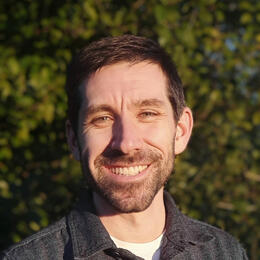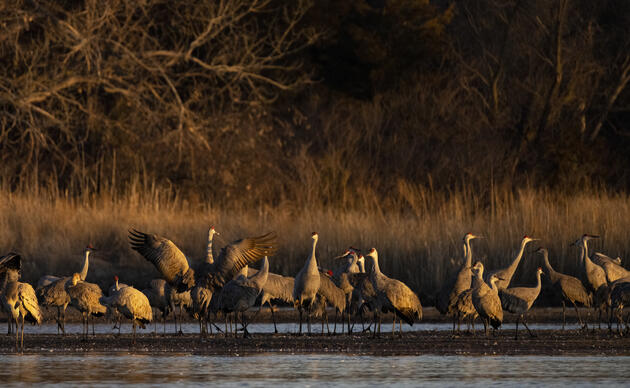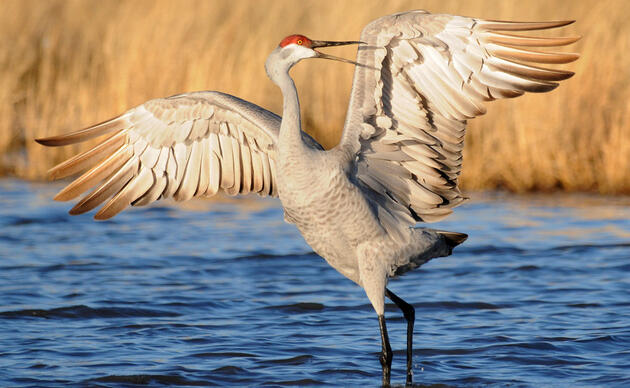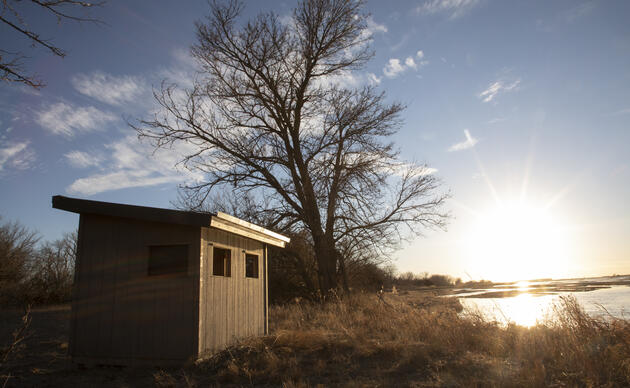This fall, on one cold November morning, I sat in a Rowe blind with my two young children waiting expectantly for the sunrise. Unexpectedly, we were rewarded with an inspiring glimpse of three Whooping Cranes alighting from the Platte River along Rowe Sanctuary! It was a memorable first sighting for each one of us, and example of the interwoven conservation and education work that Rowe exemplifies.
Less than a century ago just fifteen Whooping Cranes remained on this earth. Thousands perished due to habitat loss and overexploitation, causing the population to drastically decline. While human behavior nearly extinguished these beautiful birds, human ingenuity inarguably saved them. We flew tiny planes to simulate migration, protected nesting habitat, and started captive recovery and breeding programs. Today, the Whooping Crane population has increased to over 800 birds.
Much like this recovery effort, Audubon’s ambitious strategy to increase bird populations across the hemisphere is outlined through our Flight Plan. Through measurable climate science, habitat conservation, community building, and policy work, we aim to increase bird populations and reverse the extreme decline birds have been experiencing for the last one hundred years.
At Rowe Sanctuary, we focus on habitat conservation and community building. Rowe stewards over 3,000 acres in and around the Platte River Valley, covering a variety of ecosystems like prairie, wetland, and riparian woodland. Staff and volunteers remain busy removing cedar trees, disking the sand bars, and burning sections of grassland at Rowe to improve and maintain these critical habitats. We build relationships with nearby landowners, local education leaders, and visitors to our center, for the first time or the hundredth.
In a world that often feels overwhelming, the Whooping Crane stands as a beacon of hope. Witnessing the wonder on my children’s faces moves me toward our mission and reminds me that big problems require big solutions – and Audubon is up to the challenge. I invite you to join us in bending the bird curve, and in doing so, protecting birds and the places they need, today and tomorrow.






